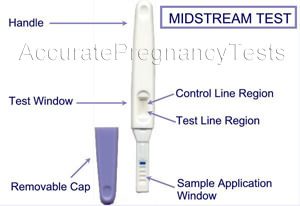
Pregnancy Test Directions: A Comprehensive Guide
Introduction
Pregnancy tests are an essential tool for individuals seeking to confirm or rule out pregnancy. These tests detect the presence of human chorionic gonadotropin (hCG), a hormone produced by the placenta during pregnancy. Understanding the directions for pregnancy tests is crucial to ensure accurate results. This comprehensive guide provides detailed instructions for using pregnancy tests, covering everything from test selection to result interpretation.
Types of Pregnancy Tests
There are two main types of pregnancy tests:
- Urine tests: These tests detect hCG in urine samples. They are the most common type of pregnancy test and can be purchased over-the-counter.
- Blood tests: These tests detect hCG in blood samples. They are typically performed in a healthcare setting and are more sensitive than urine tests.
Choosing the Right Pregnancy Test
When selecting a pregnancy test, consider the following factors:
- Sensitivity: The sensitivity of a test refers to its ability to detect low levels of hCG. More sensitive tests can detect pregnancy earlier than less sensitive tests.
- Accuracy: The accuracy of a test refers to its ability to provide correct results. Look for tests with high accuracy rates.
- Ease of use: Some tests are easier to use than others. Consider your comfort level when selecting a test.
Step-by-Step Pregnancy Test Directions
1. Collect a Sample
- Urine test: Collect a urine sample in a clean container.
- Blood test: A healthcare professional will draw a blood sample from your arm.
2. Prepare the Test
- Urine test: Remove the test strip from its packaging and dip it into the urine sample.
- Blood test: The blood sample will be processed in a laboratory.
3. Wait for Results
- Urine test: The results will appear within a few minutes.
- Blood test: The results may take several hours or days to become available.
4. Interpret Results
- Positive result: Two lines or a plus sign indicate a positive result, indicating pregnancy.
- Negative result: One line or a minus sign indicates a negative result, indicating no pregnancy.
- Invalid result: If the test does not produce a clear result, it may be invalid. Repeat the test with a new test strip.
When to Take a Pregnancy Test
The best time to take a pregnancy test is after your missed period. However, some tests can detect pregnancy as early as a few days before your expected period.
Factors that Can Affect Pregnancy Test Results
Certain factors can affect the accuracy of pregnancy tests, including:
- Early testing: Testing too early may not detect low levels of hCG.
- Incorrect sample collection: Not collecting a sufficient urine sample or contaminating the sample can lead to inaccurate results.
- Medications: Some medications, such as fertility drugs, can interfere with pregnancy test results.
- Medical conditions: Certain medical conditions, such as ectopic pregnancy or recent miscarriage, can affect hCG levels.
When to See a Healthcare Professional
If you have a positive pregnancy test result, it is important to see a healthcare professional to confirm the pregnancy and discuss prenatal care. If you have a negative pregnancy test result but suspect you may be pregnant, consult a healthcare professional for further evaluation.
Additional Tips
- Read the test instructions carefully before use.
- Use a new test strip for each test.
- Do not use expired tests.
- Store tests in a cool, dry place.
- If you have any questions or concerns, contact a healthcare professional.
Conclusion
Understanding pregnancy test directions is essential for obtaining accurate results. By following these comprehensive instructions, you can confidently use pregnancy tests to determine your pregnancy status. Remember to consult a healthcare professional if you have any questions or concerns.